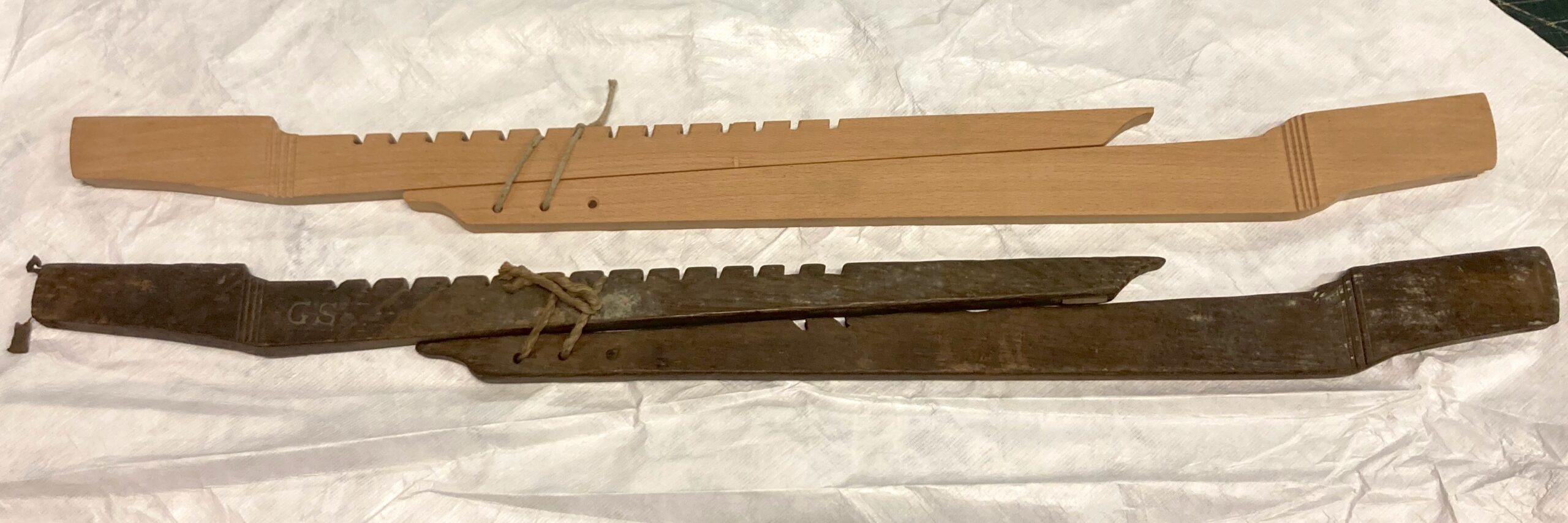The photographs above show a pair of old weaver’s temples, found last year in the museum stores at Gressenhall Farm & Workhouse in Norfolk. They were amongst a largely uncatalogued collection of artefacts from the linen weaving village of North Lopham, and were tangled in the harness of a dismantled jacquard loom.
Nowadays, handloom weavers tend to use the singular form – a temple – to name the device used to stretch the cloth across the loom as it is woven, but historically the plural form temples was more usual. The name derives from the Latin templa, meaning wooden planks or beams. There is a good description in John Duncan’s Practical and Descriptive Eassays on the Art of Weaving (1808):
The temples, by means of which the cloth is kept extended during the operation, consist of two pieces of hard wood with small sharp points in their ends, which lay hold of the edge, or selvage, of the cloth at either side. These pieces are connected by a cord, passing obliquely through holes, or notches, in each piece. By this cord, they can be lengthened or shortened, according to the breadth of the web.
.
The film above, a short extract from Bäuerliche Leinenweberei 4: Herstellen von Leinwand, shows similar temples in use in Germany in 1978/9. 1
.

.
For me the beauty of these old temples lies in their mixture of simplicity and nuance: two subtly shaped pieces of wood joined by a length of cord which is simultaneously a hinge and a means of adjustment. I had been on the lookout for an old set to copy and use, so I was delighted at finding this pair from Norfolk. The photograph above shows my version next to the original. They are a little too large for the towelling I have been weaving recently, so I also made a smaller pair, shown below in use weaving a nine-end huckaback.
.
The temples found at Gressenhall are carved with the monogram “GS”. There are no weavers with these initials mentioned in the Buckenham ledger or in the list of “Old Weavers of North Lopham of Years Ago” collected by Rita and Percy Beales in the 1920’s. But perhaps the temples once belonged to George Shaw, one of the “happy and sociable” Lopham weaving masters who met with James Mitchell, the Parliamentary Commissioner investigating the plight of handloom weavers, in the village pub in 1839. 2
Notes
- The fourth in a series of documantary films recording the re-enactment of traditional linen weaving in the town of Dickenshied in 1978/9, produced by Landschaftsverband Rheinland. See my blog for more. ↩︎
- See this blog for more about the Report of the Parliamentary Commission on Hand-Loom Weavers (1840). ↩︎




